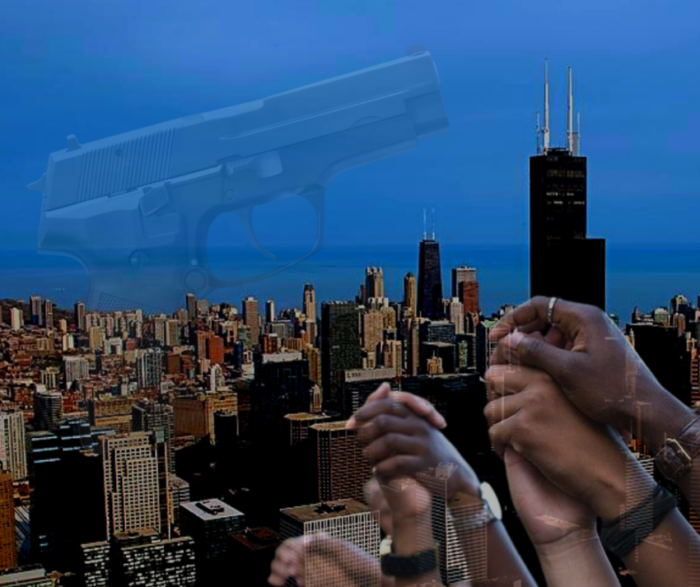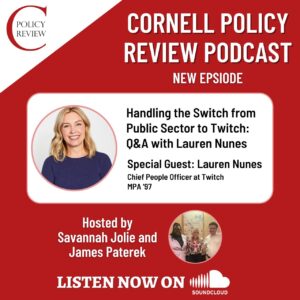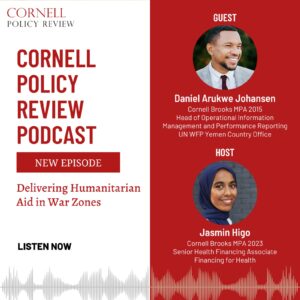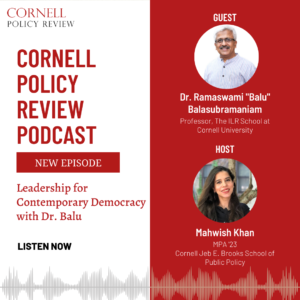
Graphic by Norie Wright
By Mollie Montague
Edited by Courtney Schneider
Introduction
A neighbor first handed JaQuay a gun when he was nine years old. Two years later he was arrested, placing him in a system that put up consistent barriers to education, employment, and housing. By fifteen, JaQuay was already experiencing housing and food insecurity.1 At thirty-three, his life was defined by survival and violence–not by choice, but because his life put him in precarious positions that often escalated. Today, JaQuay runs a cleaning service, a home maintenance service, and works at a restaurant as a general manager. He no longer escalates arguments or chooses violence to resolve disputes.2
This life change was a result of graduating from the 18-month Rapid Employment and Development Initiative (READI) program. Tired of feeling unsafe, JaQuay was convinced to try the program by a READI outreach worker. In just a few months, JaQuay began to see the program’s impact on his life. In arguments with friends, he found himself de-escalating when he previously would have retaliated. He felt the program united him with other young men and helped them heal the collective traumas that contributed to their limited options for success.3 READI, in its community intervention program that combines Cognitive Behavioral Interventions (CBI) with training, employment, and wrap-around services, changed JaQuay’s life. Since its founding five years ago, READI has helped hundreds of men like JaQuay be part of the solution to gun violence.4
Background
Most gun violence does not take place in the form of headline-making mass shootings. Instead, shootings are concentrated in small geographic areas in cities, with most occurring among less than one percent of the population. In 2020, 45,000 people died from shootings.5 The majority of these deaths were among Black and Brown people, which comprise less than one-third of the general U.S. population.6 While the populational subset that experiences this violence may seem small, gun violence is still the leading cause of death for children and adolescents.7 A small number of perpetrators have a large impact.
The neighborhoods frequently impacted by gun violence are often those historically targeted by racism.8 These communities are disproportionately disadvantaged, both economically and through poor relationships with law enforcement.9 Decades of racial bias followed by decades of stagnant attempts to dismantle it has contributed to systems that consistently discriminate against people of color. The public sector has participated in this, both in establishing racist environments/laws and in maintaining them long after their era.10 Programs intended to promote public safety have failed to reconcile with the legacy of racial bias in the punitive justice system.11 This form of administrative racism contributed to the present state of gun violence in American cities; Chicago provides an example of this.12
Chicago is a geographically segregated city–both racially and economically–with Black and White residents living in different areas of the city that correspond to higher poverty and lower poverty, respectively.13 Some of this disparity is the result of decades of racist zoning policies that have displaced Black and Brown people from certain neighborhoods.14, 15 These resulting Black majority neighborhoods experience a higher rate of gun violence than their White counterparts.16
Present and past racism generate social and physical environments where gun violence is fostered or relied upon. Poor schools, a dearth of businesses, a lack of stable housing, and the criminalization of Black and Brown people have led to unstable communities where violence has thrived.17 Higher rates of poverty are positively correlated with higher rates of homicides, and decades of disinvestment in certain communities have led to high rates of gun use. 18, 19 Over time, group violence has become as integrated within the community as family: one READI Chicago participant stated, “When you join a gang, it’s where you grew up or people you grew up with. All of my uncles and cousins were my biggest influences.”20 Many communities perceived as unsafe and with consistent exposure to gun violence have endured decades of generational trauma from consistent violence and incarceration.21
In 2016, Chicago saw a historic rise in gun violence. The city saw a 58% increase in gun homicides and 45% increase in non-fatal shootings.22 Ninety percent of these victims were people of color.23 In response, the University of Chicago Urban Crime Lab and the Heartland Alliance developed READI Chicago to tackle gun violence at its roots by targeting individuals most at risk of involvement. Unlike previous attempts to address violence in these communities, which frequently involved further criminalization, READI uses a gun violence prevention (GVP) model that institutes a community violence intervention (CVI) technique.
Community violence interventions prioritize evidence and community-based strategies.24 These methods have two guiding principles: a) preventing the dissemination of violence by intervening with those at the highest risk of committing or being exposed to violence and b) offering those high-risk individuals social services to improve outcomes and heal previously ignored traumas.25 These methods differ from previous law-and-order models in that they approach gun violence as a community-based public health crisis.26, 27
CVI model approaches vary across communities, with some incorporating case management and mentorship. This model type includes developing an individually appropriate plan that combines CBI, professional mentoring, and wrap-around services such as job training or legal assistance. However, “the success of a CVI strategy is only as strong as its coordinated community networks. ”28 That’s where READI Chicago steps in.
READI Chicago: The Approach
READI Chicago launched in 2017 in response to the previous year’s jump in gun violence. The University of Chicago Crime Lab and Inclusive Economy Lab developed READI to evaluate whether the evidenced-based model of CBI and transitional employment would significantly reduce gun violence in Chicago. The program is administered by the Heartland Alliance, an alliance of program providers aimed at reducing poverty and promoting social change.29 READI is designed to be highly targeted, both individually and geographically.
READI delivers services in five communities of Chicago through six partner organizations. These communities–Austin, West Garfield, North Lawndale, West Englewood, and Englewood–are historically the most impacted by disinvestment and racial oppression, and have high rates of poverty, unemployment, and violence.30 Within these communities, the program targets those most at risk of committing gun violence. According to data from the first 20 months of the program, men served are “54 times more likely to be shot and killed than the average Chicagoan, and 2.8 times more often than even other young men in the neighborhoods where READI operates.”31 Gun violence risk is defined not only as proximity, but also the resulting barriers to securing employment, housing, and healthcare. As such, while READI focuses on addressing gun violence at its root, the program also prioritizes investment in the communities served and partner organizations. For READI Chicago, the objective of reducing gun violence requires tackling other systemic issues that destabilize the safety of neighborhoods, such as unemployment and mental health.
The GVP model used by READI builds off evidence that combining paid transitional employment with CBI may help reduce gun violence.32 Transitional jobs refer to paid, temporary work with skill training and social services support. In one study of recently released former prisoners, paid temporary work was shown to reduce recidivism and new crime.33 CBI, a therapeutic process through which individuals identify and examine their emotions, has frequently proven an effective therapeutic approach to reducing recidivism and violence.34 As mentioned previously, CBI is common in CVI models, and READI combines CBI and transitional work in its GVP mission.
READI is driven by the belief that individuals must access opportunities to heal from trauma and develop marketable skills. The organization believes that doing so generates safe communities today and fosters long-term opportunities for tomorrow.35 Through CBI, participants learn impulse control and skills to respond thoughtfully to stressful situations. With paid transitional employment, they develop skills, earn a living, and confront other barriers to their success. Through community partnerships and constant program evaluations, READI hopes that this form of subsidized intervention will reduce recidivism and new crime in Chicago.36
To build on existing relationships in communities and develop local capacity, READI relies on community-based organizations to conduct its programming. Organizations that provide community outreach include The Heartland Alliance Englewood Outreach, the Institute for Nonviolence Chicago, and UCAN. In collaboration with criminal justice system partners such as local sheriff offices, these organizations use their expertise and relationships in the community to identify those most at risk of gun violence and connect them to the READI program.37 The Centers for New Horizons, Heartland Human Care Services, and North Lawndale Employment Network provide transitional employment opportunities.38 Along with READI, these organizations lead training, provide logistics and technical support, and secure transitional jobs for participants. All partnerships are regional, and because of this, participants are often in roles that assist in building capacity with employers in their own communities. When compared with the general graduate population, participants referred to READI through community-based organizations were 16% less likely to be arrested for shooting or homicide after the program.39 Referrals also resulted in 28% less victimizations of the same population, reflecting the key role stakeholder relationships play in program success.40 Evaluation of the READI program is equally important to coordination, namely because the organization’s GVP approach has been proven elsewhere, but not in Chicago. The University of Chicago Crime and Poverty labs and Heartland Alliance’s Social IMPACT Research Center evaluate progress. Among other metrics, the evaluation examines how many people go through the program, complete job training, and stay engaged after graduation. They also look at whether READI accurately identifies at-risk participants, whether communities experience a reduction in gun violence, and the incidence of participant arrests following the program. Finally, they examine money paid out to participants through transitional work and invested into capacity building, staff, and participants.41 The program remains young and some of its metrics were impacted by the COVID-19 pandemic, but developers hope that, as more metrics become available, they can inform GVP efforts throughout the nation. Meanwhile, READI continually uses the data it gathers to analyze and report on its own program.
READI Chicago: The Program
Before the program begins, participants are identified and connected to READI through outreach. Thus far, community partners have identified and connected 1,241 people to programming. The program lasts one year and consists of three phases. Once connected to the program, participants enter phase one: safety. This phase prioritizes CBI in order to develop a foundation before exploring employment. The concern here is that many acts of gun violence occur because of instantaneous decisions. By teaching participants to decelerate their thinking, process their emotions, and find substitutes for violence, READI aims to help men heal before moving forward.
“CBI is very helpful, because most of us grow up seeing just one thing. It gives you a different way of thinking…If you take the time to think before you act, you get a better result. It’s still overwhelming, but I’m not going to let anything break me. People like me just need an opportunity.”42 –READI participant
Each participant completes about 200 hours of CBI to develop social-emotional skills and heal from trauma. During this first phase, participants complete about 12 hours per week of skills training and professional development, throughout which READI work crew staff, coaches, and outreach workers offer other wraparound services such as assistance with housing.43 Phase one aims to provide a safe environment for participants to heal, learn, and grow before exploring employment opportunities.
The second phase of the program connects participants to paid transitional employment. To date, READI has paid about $9.5 million to participants exploring different employment sectors.44 Participants practice skills, experiment with different jobs, and maintain economic stability. One participant is quoted, “It’s motivating and exciting. You don’t have to worry about getting robbed or going to jail. I know that paycheck is going to be there.”45 They can continue to train, gain certifications, and receive support services while completing transitional work. Phase two prepares participants to enter the unsubsidized workforce.
The third and final READI phase transitions to full-time work. The READI team works with participants to develop long-term goals and short-term action items. To ensure a smooth transition, participants and staff work closely to identify opportunities and build off the skills learned up to that point. Staff work to maintain strong relationships with participants so that they remain connected to the program following graduation. One community-partner outreach worker shared, “We spend a lot of time with our participants, getting close and building brother-like relationships…So although that participant is done with READI now, we still keep in touch.”46 This allows graduates to help maintain and build a “network of men seeking to become positive forces in their families and communities” following their completion of the program.47
According to preliminary results, though the program does not reduce all forms of violence, READI participants are less likely to participate in homicides and shootings. Promisingly, a study of 2,500 men at the highest risk of gun violence found that READI participants had 63% fewer arrests and 19% fewer victimizations.48 Most individuals eligible to start work following the program do so and remain employed. Some participants finish the program and return to work for READI or other community partners, and many emerge in an entirely different position emotionally and economically from where they began. Finally, the program has shown to be a cost-effective model for treating gun violence, with a study across the first 20 months of the program revealing a reduction in the “overall cost to society of violence by at least $184,000 per participant, implying a 3:1 benefit-cost ratio from violence reduction.”49 These metrics offer early evidence that the program is making a difference in some Chicago areas.
Moving Forward: Growth
The early success of READI has gained national recognition. With the world turning its focus to public health and safety during the pandemic, models like READI offered an example of how gun violence can be approached with a holistic emphasis on health and safety. As a result, READI Chicago, the Heartland Alliance, and other partners across the nation formed the National Coalition for Gun Violence Interventions to bring together “experts, practitioners, policymakers, and researchers who work through a public health approach.”50 They hope to transform communities, resulting in a reduction and end of gun violence and gun-related deaths.
Since its founding at the beginning of the pandemic, the Coalition has grown to more than 28 organizations from 15 cities. They have advised President Biden’s transition teams on gun violence priorities, participated in a national listening session, and submitted policy recommendations.51 Coalition partners, like READI, focus on community-led outreach and safety, re-entry and workforce development, and data to inform future intervention and policy efforts.52 The National Coalition for Gun Violence Interventions aims to amplify the impact of local programs like READI to transform the conversation around gun violence and approaches to solutions nationally.
As gun violence continues to plague American communities, programs like READI offer a model for addressing the issue at its roots. Beyond gun violence, these programs challenge decision-makers to reconsider public safety. Programs that congruently target public health, wellbeing, and safety extend beyond simply removing criminal perpetrators from a community or fostering community outreach among public safety officials. Though gun violence may be an issue across the U.S., there is growing recognition that some solutions materialize best in communities. Included in the American Jobs Plan, proposed by President Biden in 2021, was approximately $5 billion for community violence intervention and evidence-based programs.53 The Treasury Department informed state and local governments that some of the $350 billion American Rescue Plan funding could be invested in similar programs.54 Additionally, a growing number of state, local, and private grants promote targeted community violence interventions.55 These funding opportunities emphasize that a solution for gun violence may be at the local level. Throughout a nation otherwise divided on the issue of gun violence, programs like READI chart a path forward for public safety, community investment, and, eventually, fewer victims.
References
- “JaQuay,” www.heartlandalliance.org (Heartland Alliance, 2022), https://www.heartlandalliance.org/participants/jacquay/.
- “JaQuay,” www.heartlandalliance.org (Heartland Alliance, 2022), https://www.heartlandalliance.org/participants/jacquay/.
- “JaQuay,” www.heartlandalliance.org (Heartland Alliance, 2022), https://www.heartlandalliance.org/participants/jacquay/.
- “READI: About,” www.heartlandalliance.org (Heartland Alliance, 2022), https://www.heartlandalliance.org/readi/about/.
- “Community Violence,” Giffords: Courage to Fight Gun Violence (Giffords, September 9, 2021), https://giffords.org/issues/community-violence/.
- “Community Violence,” Giffords: Courage to Fight Gun Violence (Giffords, September 9, 2021), https://giffords.org/issues/community-violence/.
- “Community Violence,” Giffords: Courage to Fight Gun Violence (Giffords, September 9, 2021), https://giffords.org/issues/community-violence/.
- “Gun Violence Disproportionately and Overwhelmingly Hurts Communities of Color,” Center for American Progress, June 30, 2022, https://www.americanprogress.org/article/gun-violence-disproportionately-and-overwhelmingly-hurts-communities-of-color/.
- Christopher Bilicic, “Understanding the Complexities and Origins of Gun Violence in Chicago” (2021), https://digitalrepository.trincoll.edu/theses/866/.
- Brian Williams and Brendin Duckett, “At the Juncture of Administrative Evil and Administrative Racism: The Obstacles and Opportunities for Public Administrators in the United States to Uphold Civil Rights in the Twenty‐First Century,” Public Administration Review 80, no. 4 (December 22, 2020): 1038–50, https://doi.org/10.1111/puar.13279.
- Jennifer Alexander and Camilla Stivers, “Racial Bias: A Buried Cornerstone of the Administrative State,” Administration & Society 52, no. 10 (May 29, 2020): 1470–90, https://doi.org/10.1177/0095399720921508.
- Brian Williams and Brendin Duckett, “At the Juncture of Administrative Evil and Administrative Racism: The Obstacles and Opportunities for Public Administrators in the United States to Uphold Civil Rights in the Twenty‐First Century,” Public Administration Review 80, no. 4 (December 22, 2020): 1038–50, https://doi.org/10.1111/puar.13279.
- Christopher Bilicic, “Understanding the Complexities and Origins of Gun Violence in Chicago” (2021), https://digitalrepository.trincoll.edu/theses/866/.
- Fredrick, Earl. “Death, Violence, Health, and Poverty in Chicago.” Harvard Public Health Review 19 (2018): 1–25. https://www.jstor.org/stable/48515216.
- Christopher Bilicic, “Understanding the Complexities and Origins of Gun Violence in Chicago” (2021), https://digitalrepository.trincoll.edu/theses/866/.
- Fredrick, Earl. “Death, Violence, Health, and Poverty in Chicago.” Harvard Public Health Review 19 (2018): 1–25. https://www.jstor.org/stable/48515216.
- “READI: About,” www.heartlandalliance.org (Heartland Alliance, 2022), https://www.heartlandalliance.org/readi/about/.
- Fredrick, Earl. “Death, Violence, Health, and Poverty in Chicago.” Harvard Public Health Review 19 (2018): 1–25. https://www.jstor.org/stable/48515216, 2.
- “READI: About,” www.heartlandalliance.org (Heartland Alliance, 2022), https://www.heartlandalliance.org/readi/about/.
- “Anthony,” Heartland Alliance (Heartland Alliance, 2022), https://www.heartlandalliance.org/participants/anthony/.
- Christopher Bilicic, “Understanding the Complexities and Origins of Gun Violence in Chicago” (2021), https://digitalrepository.trincoll.edu/theses/866/.
- “READI Chicago Evaluation Finds Reductions in Shootings and Homicides,” READI Chicago: A Heartland Alliance Program (Heartland Alliance, 2022), https://www.heartlandalliance.org/wp-content/uploads/2022/05/READI-Chicago-20-month-outcomes-analysis-March-2022.pdf..
- “READI,” READI | UChicago Crime Lab (University of Chicago, 2022), https://urbanlabs.uchicago.edu/programs/readi.
- “Community Violence,” Giffords: Courage to Fight Gun Violence (Giffords, September 9, 2021), https://giffords.org/issues/community-violence/.
- “Community Violence,” Giffords: Courage to Fight Gun Violence (Giffords, September 9, 2021), https://giffords.org/issues/community-violence/.
- Nazish Dholakia and Daniela Gilbert, “Community Violence Intervention Programs, Explained,” Vera Institute of Justice, September 1, 2020, https://www.vera.org/community-violence-intervention-programs-explained.
- Fredrick, Earl. “Death, Violence, Health, and Poverty in Chicago.” Harvard Public Health Review 19 (2018): 1–25. https://www.jstor.org/stable/48515216.
- “Community Violence,” Giffords: Courage to Fight Gun Violence (Giffords, September 9, 2021), https://giffords.org/issues/community-violence/.
- “READI: About,” www.heartlandalliance.org (Heartland Alliance, 2022), https://www.heartlandalliance.org/readi/about/.
- “Communities,” READI Chicago: A Heartland Alliance Program (Heartland Alliance, 2022), https://www.heartlandalliance.org/readi/communities/.
- “READI Chicago Evaluation Finds Reductions in Shootings and Homicides,” READI Chicago: A Heartland Alliance Program (Heartland Alliance, 2022), https://www.heartlandalliance.org/wp-content/uploads/2022/05/READI-Chicago-20-month-outcomes-analysis-March-2022.pdf.
- “READI: About,” www.heartlandalliance.org (Heartland Alliance, 2022), https://www.heartlandalliance.org/readi/about/.
- Valerie Levshin et al., “More than a Job: Final Results from the Evaluation of the Center for Employment Opportunities (CEO) Transitional Jobs Program” (Office of Planning, Research and Evaluation (OPRE) Administration for Children and Families U.S. Department of Health and Human Services; U.S. Department of Health and Human Services, January 2012), https://www.mdrc.org/sites/default/files/full_451.pdf.
- “What Is Cognitive Behavioral Intervention?,” Applied Behavioral Analysis | How to Become an Applied Behavior Analyst (Applied Behavioral Analysis, August 17, 2021), https://www.appliedbehavioranalysisedu.org/what-is-cognitive-behavioral-intervention-in-the-context-of-applied-behavior-analysis/.
- “READI: About,” www.heartlandalliance.org (Heartland Alliance, 2022), https://www.heartlandalliance.org/readi/about/.
- Valerie Levshin et al., “More than a Job: Final Results from the Evaluation of the Center for Employment Opportunities (CEO) Transitional Jobs Program” (Office of Planning, Research and Evaluation (OPRE) Administration for Children and Families U.S. Department of Health and Human Services; U.S. Department of Health and Human Services, January 2012), https://www.mdrc.org/sites/default/files/full_451.pdf.
- “Program,” READI Chicago: A Heartland Alliance Program (Heartland Alliance, 2022). https://www.heartlandalliance.org/readi/program/
- “Communities,” READI Chicago: A Heartland Alliance Program (Heartland Alliance, 2022), https://www.heartlandalliance.org/readi/communities/.
- READI Chicago Evaluation Finds Reductions in Shootings and Homicides,” READI Chicago: A Heartland Alliance Program (Heartland Alliance, 2022), https://www.heartlandalliance.org/wp-content/uploads/2022/05/READI-Chicago-20-month-outcomes-analysis-March-2022.pdf..
- READI Chicago Evaluation Finds Reductions in Shootings and Homicides,” READI Chicago: A Heartland Alliance Program (Heartland Alliance, 2022), https://www.heartlandalliance.org/wp-content/uploads/2022/05/READI-Chicago-20-month-outcomes-analysis-March-2022.pdf.
- “Impact,” READI Chicago: A Heartland Alliance Program. (Heartland Alliance, 2022) https://www.heartlandalliance.org/readi/impact/
- “Anthony,” Heartland Alliance (Heartland Alliance, 2022), https://www.heartlandalliance.org/participants/anthony/.
- “Program,” READI Chicago: A Heartland Alliance Program (Heartland Alliance, 2022). https://www.heartlandalliance.org/readi/program/
- “Program,” READI Chicago: A Heartland Alliance Program (Heartland Alliance, 2022). https://www.heartlandalliance.org/readi/program/
- “Eric,” Heartland Alliance (Heartland Alliance, 2022), https://www.heartlandalliance.org/participants/eric/
- “UCAN: Hope For Change,” Heartland Alliance (Heartland Alliance, 2022) https://www.heartlandalliance.org/ucan-hope-for-change/
- “Program,” READI Chicago: A Heartland Alliance Program (Heartland Alliance, 2022). https://www.heartlandalliance.org/readi/program/
- READI Chicago Evaluation Finds Reductions in Shootings and Homicides,” READI Chicago: A Heartland Alliance Program (Heartland Alliance, 2022), https://www.heartlandalliance.org/wp-content/uploads/2022/05/READI-Chicago-20-month-outcomes-analysis-March-2022.pdf.
- READI Chicago Evaluation Finds Reductions in Shootings and Homicides,” READI Chicago: A Heartland Alliance Program (Heartland Alliance, 2022), https://www.heartlandalliance.org/wp-content/uploads/2022/05/READI-Chicago-20-month-outcomes-analysis-March-2022.pdf.
- “National Coalition for Gun Violence Interventions,” Heartland Alliance (Heartland Alliance, 2022) https://www.heartlandalliance.org/national-coalition-for-gun-violence-interventions/
- “National Coalition for Gun Violence Interventions,” Heartland Alliance (Heartland Alliance, 2022) https://www.heartlandalliance.org/national-coalition-for-gun-violence-interventions/
- “Launch of National Coalition for Gun Violence Interventions Leverages Local Expertise to Increase Public Safety,” Heartland Alliance (Heartland Alliance, July 21, 2022), https://www.heartlandalliance.org/press_release/launch-of-national-coalition-for-gun-violence-interventions-leverages-local-expertise-to-increase-public-safety/.
- Jon Schuppe, “How One Sentence (and $5 Billion) Could Reshape America’s Approach to Gun Violence,” NBC News, April 14, 2021, https://www.nbcnews.com/news/us-news/biden-wants-give-anti-violence-groups-5-billion-here-s-n1263990.
- “Coronavirus State and Local Fiscal Recovery Funds Interim Final Rule: Frequently Asked Questions,” January 2022. https://home.treasury.gov/system/files/136/SLFRPFAQ.pdf#page=19.
- Everytown Support Fund. “Federal Grant Programs by Community Violence Intervention Program Type.” Everytown for Gun Saftey. Accessed December 4, 2022. https://everytownsupportfund.org/govgrant-navigator/federal-grant-programs-by-community-violence-intervention-program-type/.





